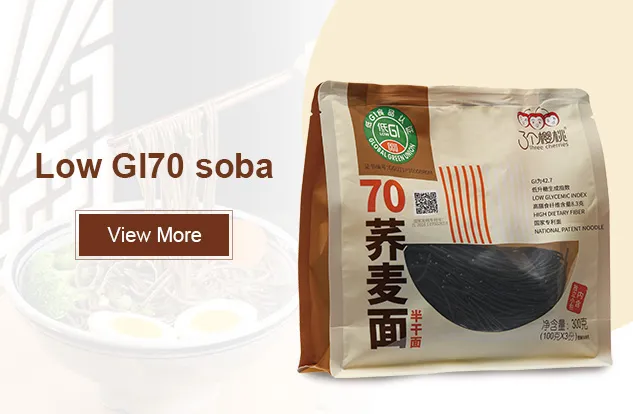how to use udon noodles
How to Use Udon Noodles A Guide to Culinary Delight
Udon noodles, with their thick, chewy texture, are a beloved staple in Japanese cuisine. Made from wheat flour, water, and salt, these noodles are incredibly versatile and can be enjoyed in various dishes, from soups to stir-fries. In this guide, we’ll explore the different ways to prepare and serve udon noodles, ensuring you can make the most of this delightful ingredient in your kitchen.
Understanding Udon Noodles
Before diving into preparations, it’s essential to understand udon noodles. Traditionally, udon is served in a broth, but it can also be enjoyed stir-fried or cold. These noodles can be found fresh, frozen, or dried in most Asian grocery stores. Fresh udon has the best texture, but frozen varieties are convenient and maintain good quality.
Basic Cooking Instructions
Cooking udon noodles is straightforward. Here’s a step-by-step guide
1. Boil Water Fill a pot with water, enough to allow the noodles to move freely. Bring it to a rolling boil. 2. Add Udon Noodles Carefully add your udon noodles to the boiling water. If using dried noodles, refer to the package for cooking time (usually around 8-12 minutes). For fresh or frozen, it typically takes 3-5 minutes. 3. Stir Occasionally Gently stir the noodles during cooking to prevent them from sticking. 4. Check for Doneness Taste a noodle to ensure it’s cooked to your liking. Udon should be chewy yet tender. 5. Drain and Rinse Once cooked, drain the noodles in a colander. Rinse them under cold water to stop the cooking process and wash away excess starch.
Udon in Soup
One of the most popular ways to enjoy udon noodles is in a flavorful broth. Here’s a simple udon soup recipe
Ingredients - Cooked udon noodles - Dashi (Japanese soup stock) - Soy sauce - Mirin (sweet rice wine) - Toppings Green onions, tempura, nori, mushrooms, and cooked protein (chicken, beef, or tofu)
how to use udon noodles

Instructions 1. Prepare the Broth In a pot, combine dashi, soy sauce, and mirin. Bring it to a gentle simmer. 2. Add Toppings You can add mushrooms or protein directly into the broth to infuse flavor. 3. Serve Place the cooked udon noodles in a bowl, pour the hot broth over them, and top with sliced green onions, tempura, or nori as desired.
Stir-Fried Udon
For a delightful twist, try stir-frying your udon noodles. Here’s a basic stir-fry recipe
Ingredients - Cooked udon noodles - Vegetable oil - Assorted vegetables (bell peppers, carrots, broccoli, etc.) - Protein (chicken, shrimp, or tofu) - Soy sauce, oyster sauce, and sesame oil for seasoning
Instructions 1. Heat Oil In a large skillet or wok, heat vegetable oil over medium-high heat. 2. Cook Protein Add your chosen protein and cook until browned and fully done. Remove and set aside. 3. Stir-Fry Vegetables In the same pan, add your vegetables and stir-fry until they are crisp-tender. 4. Combine Ingredients Add the cooked udon noodles and protein back into the pan. Pour in soy sauce, oyster sauce, and a drizzle of sesame oil. Toss everything together until well combined and heated through.
Cold Udon
On a warm day, cold udon noodles make for a refreshing dish. Simply cook the noodles as described, then rinse with cold water. Serve them chilled alongside a dipping sauce made from soy sauce, mirin, and a dash of wasabi or grated ginger. Add sliced green onions and sesame seeds for extra flavor.
Conclusion
Udon noodles are a versatile component of Japanese cuisine, capable of being transformed into various delicious meals. Whether you choose to enjoy them in a soothing broth, in a sizzling stir-fry, or as a refreshing cold dish, their delightful texture and taste will surely impress. Incorporate udon noodles into your cooking repertoire, and explore the endless possibilities they offer in creating scrumptious dishes. Happy cooking!
-
Unleash Your Inner Chef with Delectable Italian Pasta CreationsNewsAug.01,2025
-
Savor Health and Flavor: Irresistible Soba Noodles for Sale Await!NewsAug.01,2025
-
Nourish Your Body with Premium Organic Ramen - A Culinary Delight AwaitsNewsAug.01,2025
-
Elevate Your Dishes with Our Exquisite Kinds of Egg NoodlesNewsAug.01,2025
-
Dive into Flavorful Convenience with Our Ramen OfferingsNewsAug.01,2025
-
Discover Exquisite Types of Naengmyeon and Chilled Soba NoodlesNewsAug.01,2025
-
Is Whole Wheat Pasta Healthy?NewsMay.30,2025
Browse qua the following product new the we

















































































































